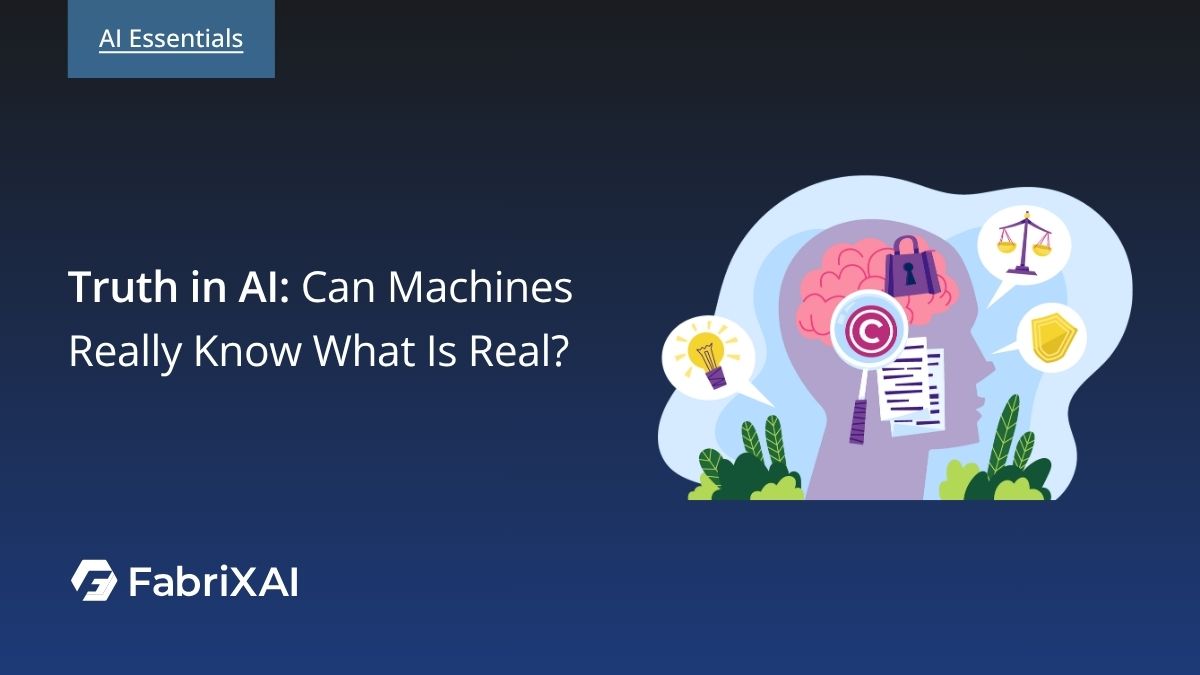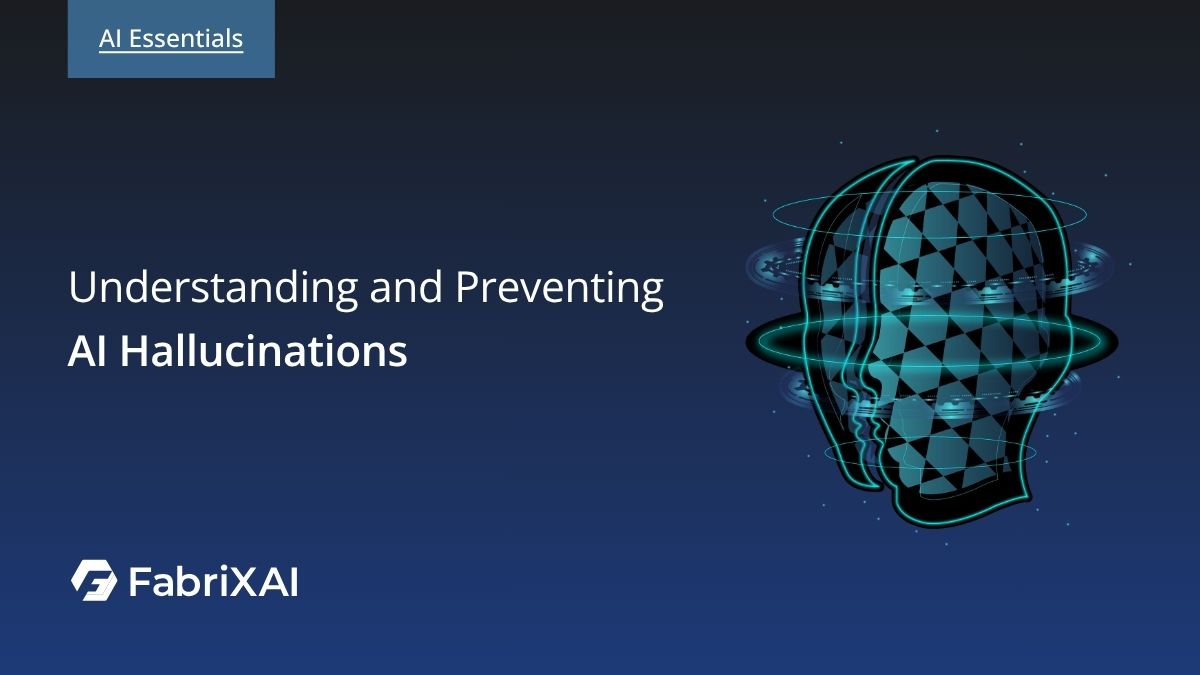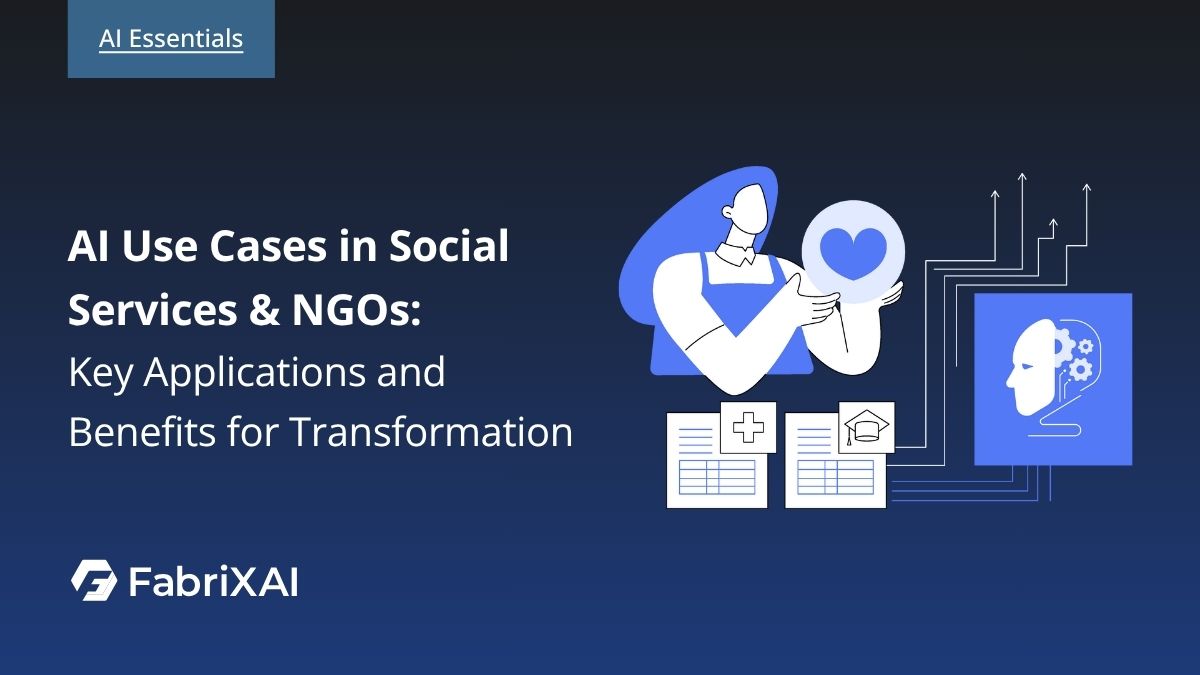Truth in AI: Can Machines Really Know What Is Real?

Artificial intelligence has transformed how we access information. It can summarize entire books, explain complex theories, and write persuasive arguments in seconds. But as AI becomes more fluent and confident, a fundamental question arises: Can machines truly know what is real?
The rise of generative AI has brought both extraordinary capabilities and considerable confusion. When an AI model sounds authoritative, people often assume it understands the content it produces. Yet behind the polished language lies a statistical system, not a truth-seeking mind.
This article explores the nature of truth in AI, the risks of AI-driven misinformation, and how we can build systems and societies that maintain trust in the age of artificial intelligence.
What Do We Mean by Truth?
Before asking whether AI can know truth, we must clarify what truth means for humans. Philosophers have debated this for centuries, offering several influential theories:
1. Correspondence Theory of Truth
Truth is defined as alignment with reality. A statement such as “Water boils at 100°C at sea level” is true because it matches observable, measurable facts. This view is dominant in scientific reasoning.
2. Coherence Theory of Truth
Truth is based on internal consistency within a system of statements or beliefs. A mathematical proof is true if it logically follows from accepted axioms, even if it does not describe the physical world.
3. Constructivist Theory of Truth
Truth is created socially. It depends on context, language, and consensus. What is accepted as true in one culture or era may not apply in another.
In everyday life, humans fluidly combine these views, balancing evidence, logic, and social meaning. AI, however, operates in a fundamentally different way.
How AI “Knows” (or Does Not Know)
Large language models such as ChatGPT, Claude, and Gemini do not perceive reality. They have no senses, beliefs, or consciousness. Instead, they are trained on massive collections of text and learn patterns of language, predicting what words are likely to appear next.
This means that AI does not know facts; it generates text that resembles knowledge.
AI Truth Is Not Human Truth
AI does not access the world directly. When it states that the Eiffel Tower is in Paris, it is not recalling a fact. It is producing a phrase that statistically aligns with patterns in its training data.
When an AI makes an incorrect claim or fabricates a citation, it is not lying. It is doing exactly what it was designed to do: produce plausible language, not evaluate truth.
The Map and the Territory
AI’s representation of the world is a map, but it is not the territory.
The model is an abstraction shaped by its data and training limits. As Alfred Korzybski famously observed, “The map is not the territory.”
No matter how detailed the linguistic map becomes, it can never replace direct experience.
When AI Appears Truthful and When It Fails
AI systems increasingly operate in environments where accuracy matters, including law, medicine, education, and journalism. When users mistake fluency for factual grounding, failures occur.
1. The Truth Machine Illusion
Users often assume that if AI sounds clear and professional, it must be correct. A 2023 study titled “Truth Machines: Synthesizing Veracity in AI Language Models” found that people routinely over-trust AI responses because of their confidence and tone, even when the information is false.
2. The AI Trust Paradox
- The paradox: The more human and confident AI appears, the more users trust it, even if it is unreliable.
- The risk: People outsource critical judgment to systems that cannot verify truth.
- The outcome: AI-driven misinformation spreads quickly and convincingly.
3. Failures in Real-World Contexts
- Healthcare: Incorrect treatment advice or misunderstood symptoms.
- Law: Fabricated legal citations.
- Business: Inaccurate financial summaries.
- Education: Students relying on invented research or erroneous summaries.
In each example, the issue is not malicious intent but misplaced confidence.
Why AI Generates Misinformation
These failures arise from how AI systems are trained and deployed.
1. Imperfect Training Data
AI learns from the internet, a space full of misinformation, bias, and opinion. Poor input leads to flawed output.
2. Lack of Real-Time Verification
Most models cannot fact-check themselves or validate new information after training.
3. Reinforcement of Confidence
Models are rewarded for sounding helpful and natural. Humans prefer certainty, so AI learns to present itself confidently, even when uncertain.
4. Limited Understanding of Context
AI does not recognize nuance or intent. It cannot inherently distinguish scientific data from fiction or satire unless instructed.
This creates synthetic certainty: text that feels accurate but may not be.
Trust, Authority, and Deception in the AI Era
AI as a New Gatekeeper of Truth
As AI tools summarize news, filter information, and generate content, they influence what users perceive as true. In fields such as journalism, law, and politics, an AI error or bias can shift opinions, policies, and decisions.
The Fragility of Trust
Trust built through fluency is easily destroyed by a single mistake. When an AI generates false information, it diminishes trust in the entire ecosystem. This reflects the AI trust paradox in practice:
The more human AI appears, the less we question it. Once it fails, we distrust it entirely.
Truth as a Social Practice
Humans maintain truth through verification, debate, and accountability. AI disrupts this process because its statements do not have a human source or intention.
Machines can simulate truth-telling, but they cannot truly participate in it.
How We Can Reduce AI Misinformation
Machines cannot know truth the way humans do, but we can design systems that better approximate truth.
1. Retrieval Augmented Generation (RAG)
RAG systems connect models to verified databases or search tools.
Rather than guessing, the AI retrieves evidence and then generates an answer, greatly reducing hallucinations.
2. Human Oversight
Human review remains essential in fields such as healthcare, law, and finance. Experts provide judgment that AI lacks.
3. Fact-Checking and Source Transparency
AI systems should clearly show where their information comes from and provide citations or data lineage when possible.
4. Clear Communication of Uncertainty
Interfaces should indicate uncertainty, such as:
“This information may contain errors” or “Verified as of [date].”
5. Digital and AI Literacy
Users need stronger skills in evaluating AI content. Critical thinking and media literacy are essential tools for navigating an AI-driven world.
Can Machines Ever Truly Know?
Knowledge for humans involves experience and awareness. We learn through perception, reflection, and meaning. AI lacks these capacities entirely. It does not experience truth; it simulates it.
The Limits of Synthetic Knowledge
Even with perfect grounding, AI will only represent patterns of knowledge. It will never experience or believe them.
A Future of Shared Truth Discovery
Rather than expecting AI to know truth, we should design it to help humans find truth efficiently and responsibly.
As synthetic media expands, preserving truth becomes a moral responsibility, not just a technical one.
Key Takeaways
- AI does not know truth; it predicts text.
- Fluency often leads people to trust AI too much.
- AI-driven misinformation poses significant risks across major sectors.
- Better grounding, transparency, and oversight can improve reliability.
- Humans remain the ultimate arbiters of truth.
Frequently Asked Questions
Q1. What is AI truth?
It refers to the appearance of accuracy in AI responses. AI does not know truth; it generates language patterns.
Q2. Why is AI misinformation dangerous?
Because it spreads quickly, sounds credible, and can influence important decisions.
Q3. What is the AI trust paradox?
People often trust AI more when it sounds confident, even if the content is incorrect.
Q4. Can AI ever know what is real?
No. AI lacks perception and consciousness. It can approximate truth but cannot understand it.
Q5. How can we make AI more trustworthy?
Through grounding, transparency, human oversight, and user education.
Final Thoughts
The rapid rise of AI invites us to reconsider what truth means. Machines can model language, simulate reasoning, and mirror human expression, but they do not know.
A future with trustworthy AI depends on aligning systems with human values: truthfulness, clarity, and accountability. If we remember that truth is something humans verify, not something machines generate, we can use AI to build an information ecosystem grounded in clarity and integrity.



